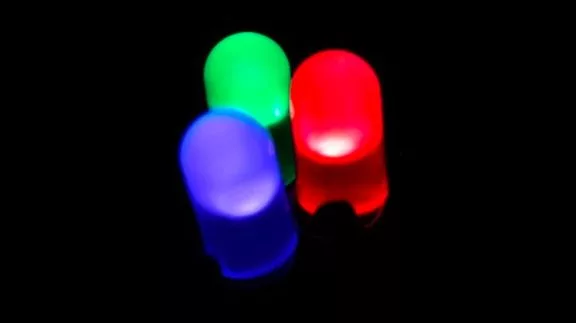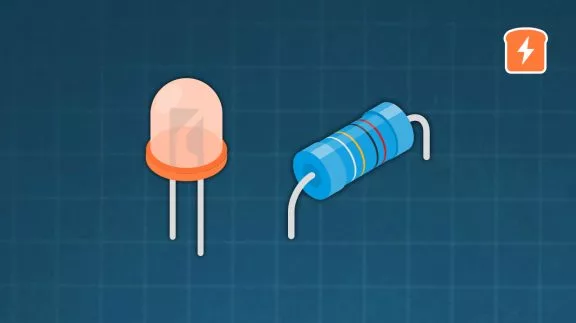Selecting a resistor for an LED - 6 easy steps
Published
Why do we need a resistor for an LED? Once you pass the forward voltage, a slight increase in voltage makes a huge increase in current. You don’t wanna blow things up!
I have six steps for choosing the resistor, but two of them are sanity checks and the other four are *really* simple, so don’t stress about it.
- Find out the forward voltage - either from the datasheet, a generic source like our color and forward voltage table, or from experimentation
- Find out the max current - this should be from the datasheet. You can almost always go past the max current and still have it work, but you’ll be shortening its life.
- Figure out how much current you want, as the current controls mainly the brightness but also the color temperature. Just because you can go up to 100 milliamps doesn’t mean that you need to, you may be just fine with half or a tenth or a hundredth of the max current, though at some point you may start to wonder why you have such a big LED.
- Figure out what resistance it will require to hit that current. Use Ohm’s Law and math it - voltage source minus forward voltage at the desired current, then V/I. We will hopefully have a tool for this ASAP.
- Make sure the resistor has a high enough power rating
- Review everything to make sure it makes sense. If you have a 12V source and a 3V LED, why not put three or four of them in series, instead of all of them in parallel with huge power-wasting resistors for the rest of the voltage. If your max current is 1 amp but you’re only driving it to 1 milliamp, why not use a smaller, cheaper LED? If this is just for the fun of it, then efficiency and saving a couple pennies isn’t such a big deal, so just go have some fun!

Get the latest tools and tutorials, fresh from the toaster.













